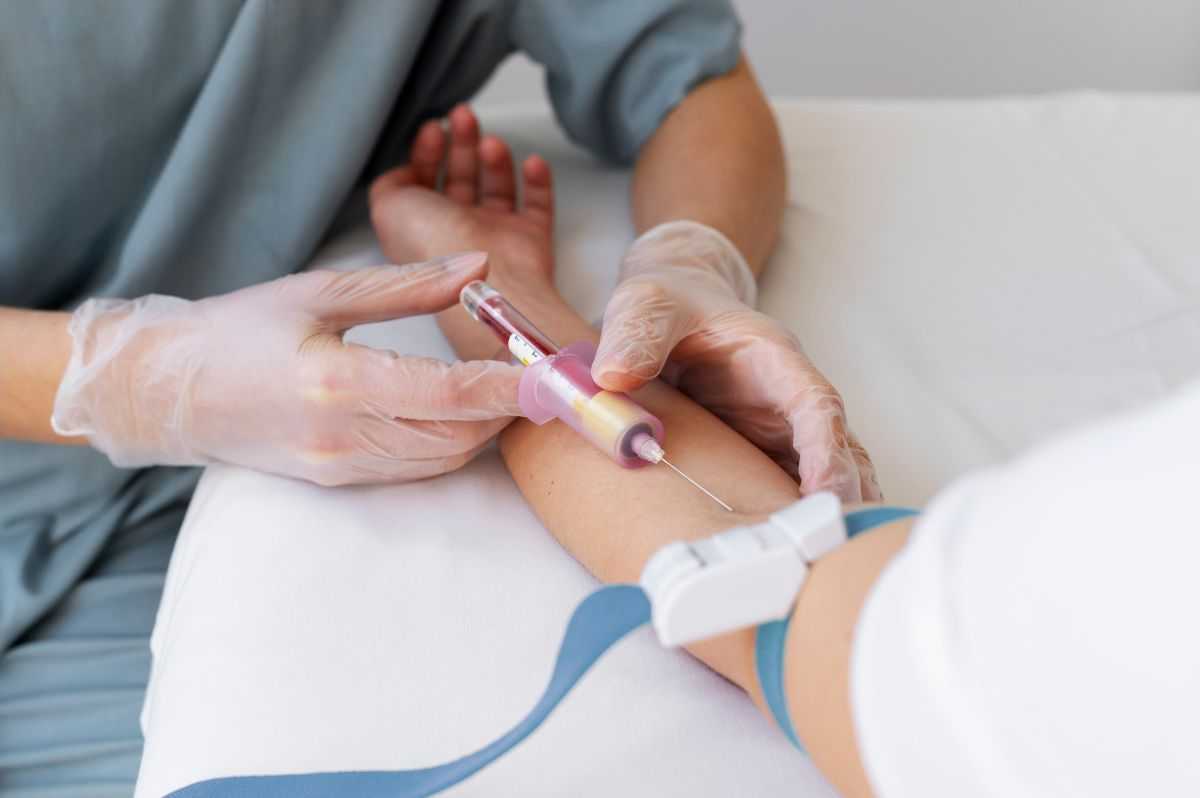When people hear “blood clots,” they often think of scary health problems like heart attacks and pulmonary embolisms. But there’s more to the story! Blood clotting is essential for our bodies. It helps stop bleeding and heal wounds. The trouble is when these clots form in our blood vessels or break off and travel to different body parts. That can lead to severe consequences, like strokes or heart attacks.
Doctors often prescribe “blood thinners” to help with these issues. Two of the most common ones are Warfarin and Heparin. These drugs help stop blood from clotting too much. They’re often used to treat blood clots in your veins or lungs. This article looks at these treatments and compares Warfarin and Heparin. Remember that when we say “heparin,” we talk about unfractionated Heparin.
In this blog
ToggleHeparin Approved Uses
Heparin prevents and treats blood clot formation in various medical scenarios. Its approved uses include:
- Venous Thromboembolism (VTE) Prevention and Treatment
- Acute Coronary Syndrome
- Atrial Fibrillation
- Hemodialysis
Warfarin Approved Uses
Warfarin’s anticoagulant properties make it valuable for several medical purposes, including:
- Atrial Fibrillation
- Venous Thromboembolism (VTE) Prevention and Treatment
- Mechanical Heart Valves
- Hypercoagulable States
- Pulmonary Hypertension
- Post-Cardiac Surgery
Heparin and Warfarin are crucial in preventing and treating conditions characterized by blood clot formation. The choice of medication depends on the specific medical situation, patient factors, and the desired mode of anticoagulation.
How Does Warfarin Work?
Warfarin is a medication that helps reduce the risk of blood clots by slowing down the production of clotting factors in the liver. Vitamin K is also involved in this process. Doctors use a test called INR to ensure the medication dosage is correct and that there’s a balance between preventing blood clots and avoiding too much bleeding. Your diet can also affect how well the medication works.
How Does Heparin Work?
Heparin is a quicker anticoagulant than Warfarin, but its effects generally don’t last as long. There are two main types of Heparin: unfractionated Heparin (UFH) and low-molecular-weight Heparin (LMWH).
Unfractionated Heparin (UFH): UFH prevents blood clot formation by enhancing a natural anticoagulant called antithrombin III (ATIII), which inhibits clotting factors like thrombin and Factor Xa. UFH is commonly used in hospitals and requires close monitoring through blood tests to ensure correct dosing.
Low-Molecular-Weight Heparin (LMWH): LMWH is a modified version of Heparin that inhibits Factor Xa more effectively than thrombin. It has a longer-lasting impact and is commonly used in outpatient settings through subcutaneous injections. LMWH may require different monitoring than UFH.
Heparin Vs Warfarin: Main Similarities
Certainly! Here’s a table summarizing the similarities between Heparin and Warfarin:
| Similarities | Heparin | Warfarin |
|---|---|---|
| Anticoagulant Action | Inhibits clotting factor activity | Inhibits Vitamin K-dependent clotting factor synthesis |
| Medical Applications | Prevents/treats DVT, PE, and more | Used for DVT, PE, atrial fibrillation, and more |
| Blood Clotting Tests | Efficacy assessed by aPTT | Efficacy measured by INR |
| Risk of Bleeding | Carries a risk of bleeding | Associated with bleeding risk |
| Dosage Individualization | Requires tailored dosages | Individualized dosages based on patient factors |
| Interaction with Other Medications | Can interact with other drugs | Interactions with medications and foods |
| Risk of Thrombocytopenia | Can lead to heparin-induced thrombocytopenia (HIT) | Not associated with thrombocytopenia |
Remember that while there are similarities, these medications have distinct mechanisms and are used based on specific clinical situations.
Heparin Vs Warfarin: Main Difference
Heparin and Coumadin both work to prevent blood clots, but they do it in different ways. Heparin acts quickly by increasing antithrombin III’s activity, which stops clotting factors and prevents coagulation. It’s usually given as an injection in hospitals and can be tested with aPTT.
Conversely, Coumadin slows down the clotting process by stopping Vitamin K-dependent clotting factor production. It’s taken orally and works gradually. To monitor Coumadin, doctors check the International Normalized Ratio (INR) to see how clotting time compares to the norm.
Regarding medical use, Heparin is used in urgent situations like surgeries or blood clots where fast action is needed. Coumadin is better for long-term medical conditions that increase the risk of clots.
So, while both drugs are good at preventing clots, they work differently and are used in different situations. The best choice depends on the patient’s medical context, so it’s crucial to tailor treatment decisions to each person.
Heparin Vs Warfarin: Which Is More Effective?
Heparin, or Warfarin, is more effective and involves analyzing many studies and research findings. Both medications are anticoagulants, which means they prevent blood clots. However, how they work, how they’re given, and when they’re used can affect how well they work.
Heparin is known for working quickly, so it’s often used in emergencies like surgeries or hospitalized patients at risk for blood clots. Studies have shown that Heparin effectively prevents deep vein thrombosis (DVT) and pulmonary embolism (PE). One study published in the New England Journal of Medicine found that Heparin significantly reduced the risk of DVT and PE in patients after surgery compared to a group that didn’t receive it (N Engl J Med, 1995).
Warfarin, on the other hand, takes longer to work. It interferes with clotting factors that depend on vitamin K, but it can take a while to build up in the body. Warfarin effectively reduces the risk of stroke in patients with atrial fibrillation in some landmark trials. For example, the SPAF (Stroke Prevention in Atrial Fibrillation) study found that warfarin use led to a 68% reduction in the risk of stroke (N Engl J Med, 1990).
Comparing Heparin and Warfarin depends on the situation. For example, a study published in Thrombosis and Haemostasis looked at how well Heparin and Warfarin worked in patients with venous thromboembolism (VTE). The study found that both medications were effective, but they had different risks of bleeding (Thromb Haemost, 2001).
It’s important to remember that how well each medication works depends on the patient’s medical condition, the urgent need for anticoagulation, whether any other drugs are being taken, and how the patient responds to the medication. One study published in the Journal of Thrombosis and Haemostasis found that individual responses to Warfarin can vary because of genetic factors (J Thromb Haemost, 2010).
In conclusion, determining which medication is more effective, Heparin or Warfarin, requires examining many studies and research findings. Both drugs work well at preventing and treating blood clots, but how well they work depends on things like when they’re used and the risks involved. It’s important to consider each patient’s needs when deciding which medication to use.
Also, read
Heparin Vs Warfarin: Common And Severe Side Effects
Remember that the table below briefly summarizes and may not cover all possible side effects. Heparin and Warfarin are anticoagulant medicines that have advantages and disadvantages.
| Side Effect | Common with Heparin | Common with Warfarin | Severe with Heparin | Severe with Warfarin |
|---|---|---|---|---|
| Bleeding | Yes | Yes | Hemorrhage | Hemorrhage |
| Bruising | Yes | Yes | Thrombocytopenia | Thrombocytopenia |
| Injection site reaction | Yes | No | Heparin-induced thrombocytopenia (HIT) | Skin necrosis |
| Osteoporosis | No | No | Osteoporosis | Osteoporosis |
| Hair loss | No | No | Heparin-induced alopecia | No |
| Nausea | No | No | Heparin-induced thrombocytopenia (HIT) | Skin necrosis |
| Diarrhea | No | No | Heparin-induced thrombocytopenia (HIT) | Skin necrosis |
| Allergic reactions | Yes (rare) | Yes (rare) | Anaphylaxis | Anaphylaxis |
| Hypersensitivity | Yes (rare) | Yes (rare) | Heparin-induced thrombocytopenia (HIT) | Purple toe syndrome |
| Osteoporosis | No | No | Heparin-induced osteoporosis | No |
Final Words From AzDrug
Doctors usually use a combination of Heparin and Warfarin when managing blood clots like venous thromboembolism or pulmonary embolism. They start with Heparin because it works quickly. Patients may first get a higher dose of Heparin, followed by a lower dose in the hospital. At the same time, they start taking Warfarin and have blood tests to ensure they’re getting the right amount. Patients can go home once the doctors are sure the Warfarin is working.
This changeover from Heparin to Warfarin is called “bridging.” It means taking both medicines for a few days until the Warfarin starts to work. The doctors want to ensure the warfarin levels in the patient’s blood are just right. It usually takes a week to bridge, with regular blood tests to monitor things. The guidelines for how to do this can differ from one hospital to another, depending on the hospital’s rules.


